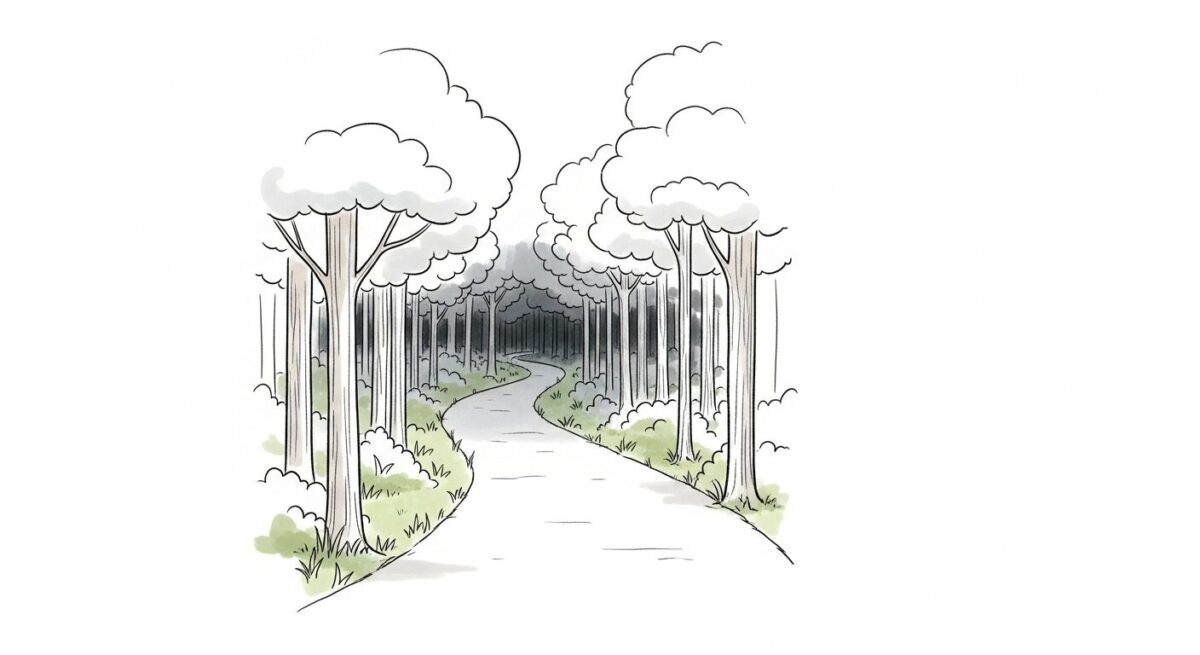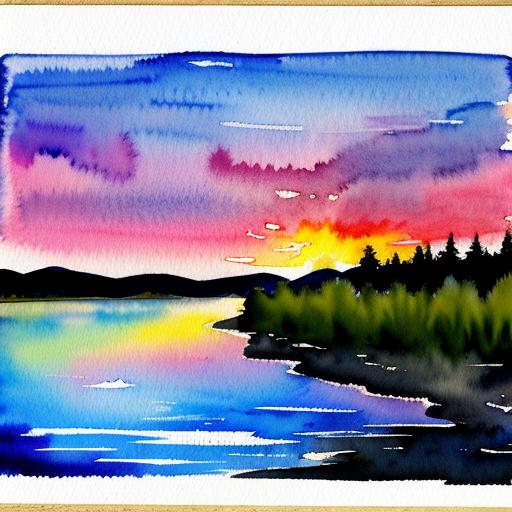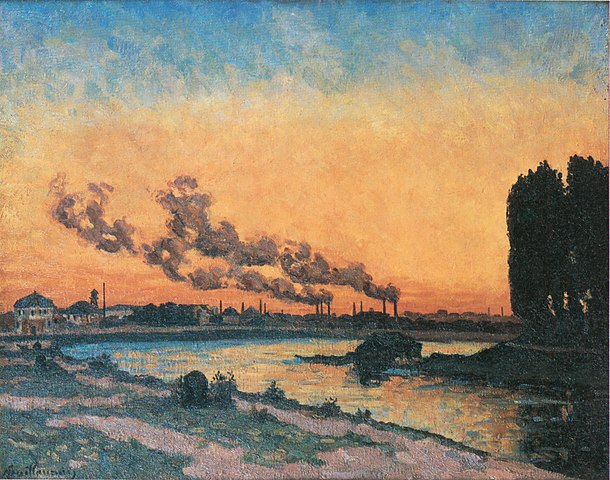Drawing landscapes might seem intimidating when you’re just starting out, especially when you look at masterful paintings by renowned artists. However, you don’t need years of experience to create beautiful landscape drawings. This comprehensive guide presents easy landscape drawing ideas specifically designed for beginners, breaking down complex scenes into manageable, step-by-step processes that build confidence and artistic skills.
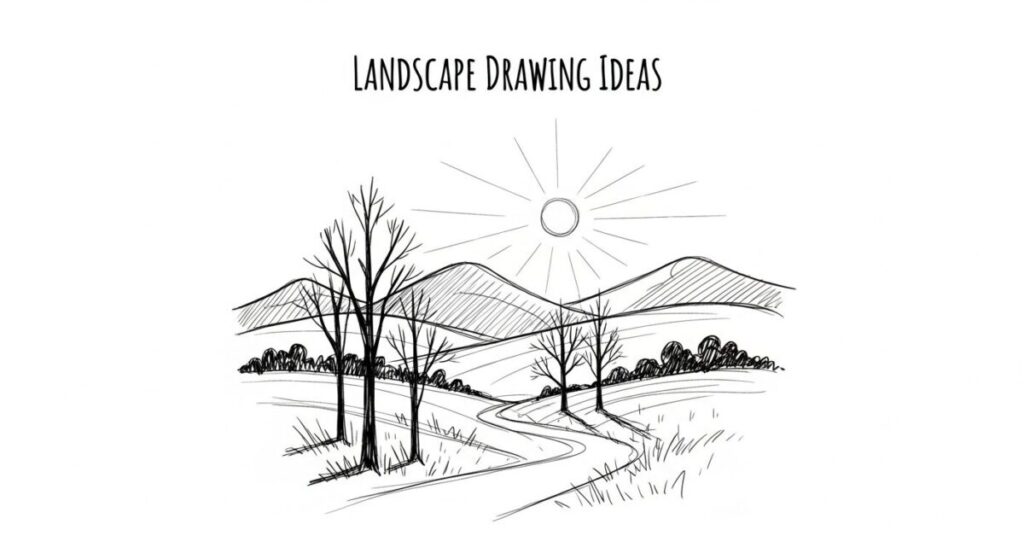
Key Takeaways:
- Start with basics: Focus on fundamental shapes and familiar scenes
- Practice observation: Learn to see nature’s underlying geometric forms
- Layer your approach: Use foreground, middle ground, and background concepts
- Keep it simple: Basic tools like pencils, paper, and an eraser are sufficient
- Embrace the process: Regular sketching develops both technique and confidence
- Prioritize learning: Aim for improvement and enjoyment over perfection
Why Easy Landscape Drawing Ideas Are Perfect for Beginners
Have you ever gazed at a breathtaking sunset or peaceful forest and wished you could capture that moment on paper? Landscape drawing offers exactly that opportunity while providing numerous benefits for developing artists. It sharpens observational skills, improves hand-eye coordination, and offers a creative outlet for self-expression.
For beginners, the key lies in finding simple scenes for beginners that don’t overwhelm with excessive detail. Rather than attempting to draw every individual leaf or ripple in water, focus on the broader composition, main shapes, and how light interacts with different elements. This approach makes the entire process more approachable and enjoyable.
Starting with simplified subjects allows you to master fundamental drawing principles without getting lost in complexity. Every professional artist began with basic sketches and observations, gradually building their skills through consistent practice and experimentation.
Essential Drawing Supplies for Landscape Art
Before exploring specific easy landscape drawing ideas, let’s review the minimal supplies needed to get started. The beauty of drawing lies in its simplicity – you don’t need expensive equipment to create compelling artwork.
- Pencils: A basic set including 2B for darker lines and HB or 2H for lighter preliminary sketches
- Eraser: A quality kneaded or vinyl eraser for corrections and highlights
- Paper/Sketchbook: Any drawing paper works, though a dedicated sketchbook keeps your practice organized
- Optional additions: Blending stumps for smooth shading effects, or simply use your finger
That’s all you need to begin your artistic journey! These basic materials provide everything necessary to explore the drawing techniques and landscape ideas covered in this guide.
Beginner-Friendly Landscape Drawing Ideas
Now let’s explore specific easy landscape drawing ideas chosen for their clear shapes and manageable complexity. These scenes provide excellent starting points for developing your artistic skills.
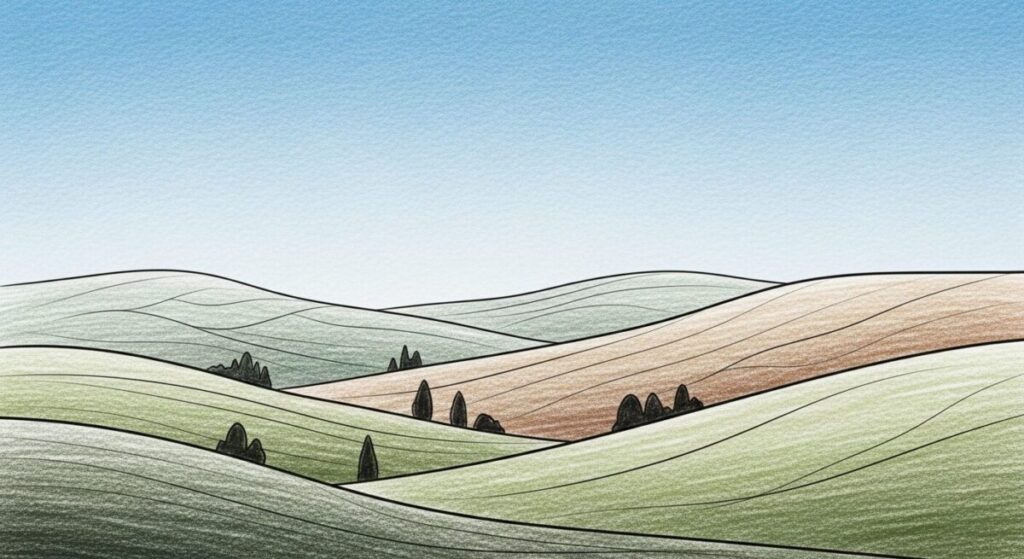
1. Gentle Rolling Hills
Rolling hills represent one of the most approachable landscape subjects, primarily featuring smooth, flowing curves without overwhelming detail.
Step-by-step approach:
- Begin with a wavy horizon line representing the hilltops
- Add additional wavy lines behind the first to suggest distant hills
- Apply light shading to create dimension – darker tones at the bottom, lighter where sunlight hits
- Include subtle texture suggestions with dots or short lines for grass
- Consider adding simple, rounded trees or bushes on hilltops for interest
2. Peaceful Lake with Mountain Backdrop
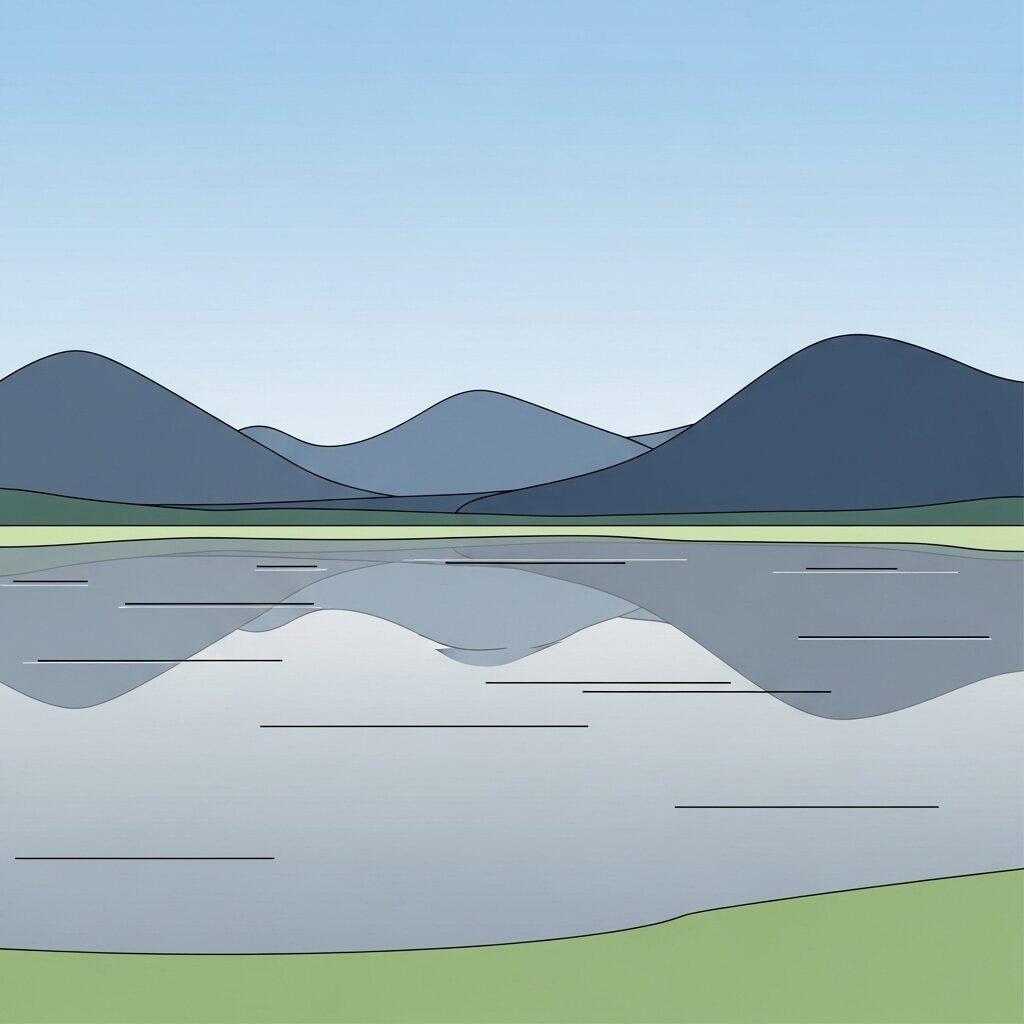
This classic landscape combination teaches basic reflection techniques while working with simple geometric mountain shapes.
Drawing process:
- Draw a horizon line where the lake meets distant land
- Sketch triangular or jagged mountain silhouettes above the horizon
- Remember that distant mountains appear lighter and less detailed
- Create the lake’s near edge with a line parallel to the horizon
- Add mountain reflections in the water using lighter, slightly wavy lines
- Include simple cloud formations floating above the mountains
3. Solitary Tree in an Open Field
Focusing on a single subject within a simple setting creates impact while remaining manageable for beginners.
Creation steps:
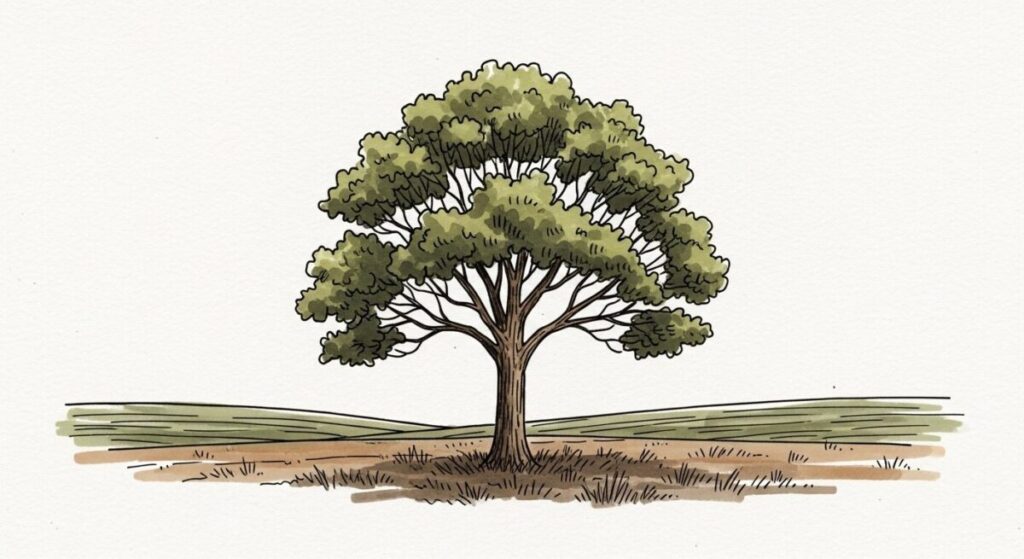
- Position a horizon line across the middle or lower third of your paper
- Sketch a basic tree structure – trunk and simple, rounded canopy (avoid individual leaves)
- Use horizontal lines or gentle squiggles to suggest field texture
- Add a subtle shadow beneath the tree for grounding
- Consider including a simple fence line or pathway leading to the tree
4. Forest Path with Suggested Trees
Even forest scenes can be simplified by focusing on basic trunk shapes and overall tree line silhouettes.
Drawing technique:
- Create a winding path that narrows as it recedes (demonstrating perspective)
- Draw vertical lines for tree trunks on both sides – taller and thicker in foreground, smaller in background
- Suggest foliage mass above trunks with simple, cloud-like shapes
- Use darker shading near tree bases to indicate shadows and depth
- Keep individual leaf details minimal
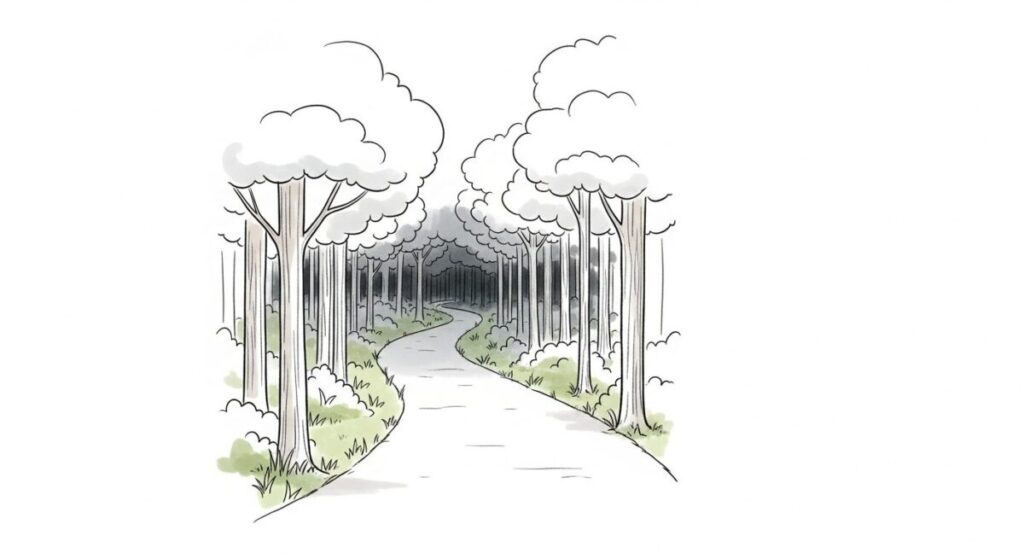
5. Sunset Silhouette Scene
Sunset scenes emphasize dramatic lighting while simplifying forms through silhouette techniques, perfect for practicing light and shadow concepts.
Approach:
- Draw a low horizon line
- Sketch outlines of distant objects like buildings, mountains, or trees above the horizon
- Fill these shapes with solid dark tones or leave as simple outlines
- The sky can remain blank or receive light shading to suggest the setting sun’s glow

Creating Depth and Dimension in Simple Landscapes
Once you’re comfortable with basic shapes, enhance your easy landscape drawing ideas by incorporating simple depth techniques that make drawings feel more three-dimensional.
Understanding Spatial Layers
Visualize your drawing in three distinct layers:
- Foreground: Elements closest to the viewer, larger and more detailed
- Middle Ground: The main focus area with medium-sized elements
- Background: Distant elements that are smaller, lighter, and less detailed
This concept, known as atmospheric perspective, creates the illusion of space and distance in your artwork.
Working with Light and Shadow
Even with just a pencil, you can create convincing light effects by considering your light source (typically the sun).
- Objects facing the light source appear brighter
- Surfaces turned away from light are darker (shadow areas)
- Objects cast shadows on the ground and nearby surfaces
- Consistent light direction throughout your drawing maintains believability
As Edgar Degas wisely noted: “Drawing is not what you see but what you make others see.” This perspective reminds us that effective drawing conveys essence and feeling rather than copying every visible detail.
Practical Tips for Successful Landscape Sketches
| Category | Advice | Benefits |
|---|---|---|
| Observation | Study real landscapes or photos, simplifying complex scenes into basic shapes | Develops ability to see fundamental forms beyond surface details |
| Light Touch | Begin with very light pencil strokes, avoiding heavy pressure until satisfied with shapes | Allows easy corrections without leaving marks on paper |
| Line Variety | Use different line types – thick, thin, wavy, straight – to add visual interest | Creates texture and helps define different elements like rough rocks versus smooth water |
| Gradual Shading | Practice creating smooth gradations from light gray to deep black | Adds volume and depth while creating convincing light and shadow effects |
| Patient Process | Take your time with each drawing rather than rushing to completion | Reduces frustration and allows for more thoughtful, accurate work |
| Enjoyment Focus | Concentrate on the creative process rather than achieving perfection | Maintains motivation and makes learning enjoyable while encouraging continued practice |
Expanding Your Artistic Horizons
Once you’ve mastered these easy landscape drawing ideas, you might want to explore color applications. Our comprehensive guide on what is watercolor painting provides excellent introduction to adding color to your landscape work. You could also learn specific techniques like how to paint trees in watercolor to bring your drawn landscapes to life with vibrant color.
Understanding color theory can help you visualize how your pencil drawings might eventually translate into full-color paintings. For those interested in developing compositional skills, our essential elements of composition guide offers principles that apply directly to drawing and can make your simple scenes for beginners much more dynamic and engaging.
Additionally, exploring different painting techniques can provide inspiration for creating varied textures and effects in your landscape drawings.
Visual Learning Resource
Sometimes seeing the drawing process in action provides invaluable insight. This tutorial video demonstrates how simple shapes and basic shading can create impactful landscape drawings:
Conclusion: Beginning Your Artistic Journey
You now have a comprehensive collection of easy landscape drawing ideas and the fundamental knowledge to start sketching. Remember that artistic growth comes through consistent practice rather than immediate perfection. Each line you draw, every shape you shade, represents progress in your creative development.
Don’t hesitate to experiment, make mistakes, and most importantly, enjoy the process! The natural world offers endless inspiration waiting to be captured on paper. So gather your pencil, find a comfortable spot, and let your creativity flow. You’re now equipped to begin your journey as a landscape artist.
For broader artistic inspiration, consider exploring our overview of famous artists and their styles to see how masters throughout history have interpreted the world around them, or discover different painting styles and movements to understand the rich tradition of landscape art.
FAQs:
Q: What is the easiest landscape subject for complete beginners?
A: Rolling hills are typically the easiest starting point because they consist mainly of simple, flowing curves without complex details. A single tree in an open field is also excellent for beginners as it focuses attention on one main subject.
Q: What are the three essential parts of a landscape drawing?
A: Landscape drawings benefit from three spatial layers: foreground (closest elements), middle ground (main subject area), and background (distant elements). This layering creates depth and visual interest.
Q: Which basic shapes form the foundation of landscape drawings?
A: Most landscapes can be simplified using triangles (mountains), rectangles and cylinders (tree trunks), circles and ovals (tree canopies, bushes), and various lines (horizons, rivers, paths). Learning to see complex natural forms as combinations of these basic shapes makes drawing much more manageable.
Q: How do I add depth to simple landscape drawings?
A: Create depth through perspective (making distant objects smaller and less detailed), varying line weight (thicker lines for closer objects), and using light and shadow (darker tones for nearby objects, lighter for distant ones, plus cast shadows for volume).
Q: What pencil type works best for beginning landscape drawing?
A: Start with an HB pencil for general sketching and a 2B for darker lines and shading. A 2H pencil can be useful for very light initial outlines. However, a single HB pencil can handle most beginner needs effectively.
More Useful Resources
How to Draw Landscapes – Emily’s Notebook: A comprehensive guide on the fundamentals of landscape drawing, covering composition, perspective, and light.
How To Draw a Landscape–Art Lesson For Kids – YouTube: A video tutorial that provides a fun and easy-to-follow guide to drawing landscapes for beginners.
18 Easy & Beginner-friendly Landscape Drawing Ideas [2025] – ARKA Energy: An article offering a variety of simple landscape drawing ideas and tips for beginners.
Ready to expand your artistic skills? Explore our comprehensive guides on painting supplies and beginning painting techniques to continue your creative journey.

